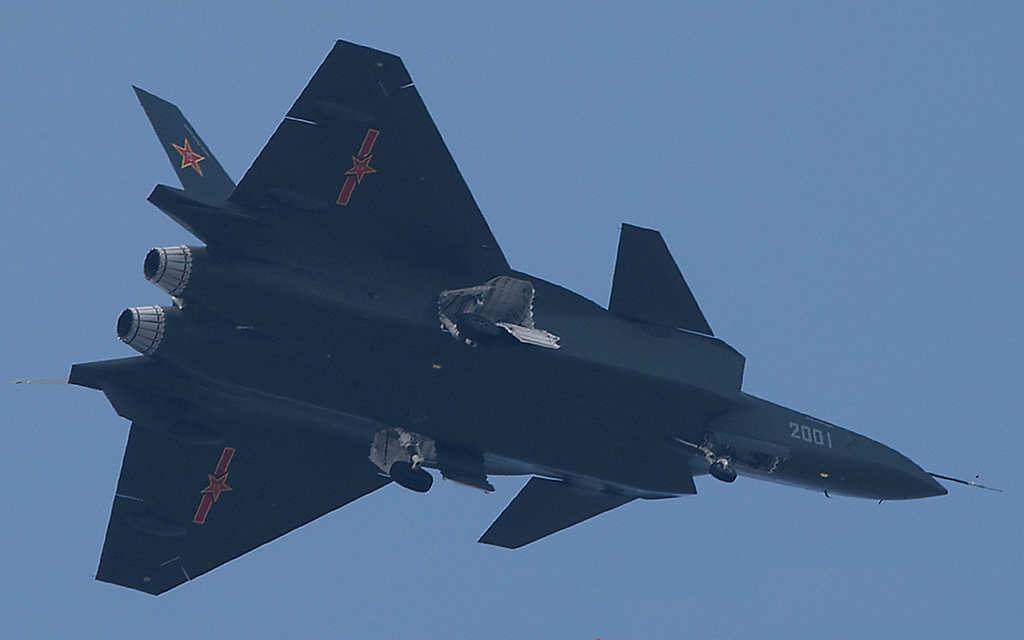malikkhawar
FULL MEMBER
New Recruit
- Joined
- Dec 10, 2010
- Messages
- 64
- Reaction score
- 0
J-20
china 5TH GEN fighter
China's new fighter, the stealthy J-20 has now completed its first flight after several weeks of preparations.
Posted by David A. Fulghum at 1/6/2011 10:41 AM CST
Seeing the J-20 stealth fighter with its nose wheel off the ground in a high-speed taxi test in Dec. was a shock to everyone except the Chinese, apparently.
The immediate impact of the new fighter’s pre-flight tests and the development of other advanced conventional weapons was downplayed by Vice Admiral David J. Dorsett, deputy Chief of Naval Operations for information dominance and director of naval intelligence (N2/N6).
“I’m more worried about Chinese game-changing capabilities in non-kinetic [areas such as information dominance, network invasion and electronic warfare],” he says. “I am most concerned about China’s focus on trying to develop [the ability] to dominate the electromagnetic spectrum, to counter space capabilities and to conduct cyberactivities.
“The other concern I have is China’s ability to become operationally efficient in a sophisticated, complex, joint war-fighting environment,” Dorsett says. “I don’t see China with those capabilities now. I do see them delivering individual components and weapons systems [like J-20 and DF-21D], but until they acquire proficiency [with them] how competent are they really going to be?”
The Chinese military’s self-proclaimed timeline is mid-century, Dorsett says. In that context, he denies that the Pentagon is overestimating its threat.
“I’m not alarmed,” Dorsett says. “I am intrigued by developments and am quite interested in the quantities and different types of technologies that we didn’t expect or overestimated.”
There is a marked relationship between China’s booming economy and its military buildup, he points out. But there are obvious shortfalls.
“The Chinese don’t have a great integrated ISR capability or an anti-submarine capability at all,” Dorsett says. “They don’t demonstrate a sophisticated level in joint warfighting. They are at the early stages of operational proficiency across the board. What would be dangerous is underestimating the timeline of synchronizing these various element.”
Other Washington-based intelligence officials say they are watching the J-20’s testing with interest.
“They have done several high-speed taxis [with the nosewheel off the ground,” says another veteran analyst. “They could still be working out some kinks before they try an actual first flight.”
There also are a lot of unknowns about the aircraft’s real importance.
“Operational impact is a tough call to make at this point, given that this plane, even if it flies, is not going to be full-up 5th gen [aircraft],” the analyst says. “In essence, this is going to be a novelty for the next decade before it starts to roll off the series production lines and gets to the line units in any numbers that would impact any of our mission planning. A lot of things can happen, good and bad, between now and then to either speed this up or severely put the brakes on things. As far as radar cross-section goes, this is not an F-22, nor should we be thinking that they are going for low RCS right out of the chute,” the analyst says.
An Achilles' Heel of Chinese high performance aircraft has been engines. The Chinese have failed so far to produce an indigenous engine that has the performance they need for a world-class fighter. Under earlier Chinese military doctrine, which favored mass over advanced technology, the People's Liberation Army Air Force was equipped with adapted versions of 1950s Soviet designs with old-technology engines. Analysts differ in their assessments of China’s first high-performance engine, the Shenyang WS-10, but recent images of the J-11B fighter—China’s bootleg version of the Sukhoi Su-30—appears to show a nozzle design that differs visibly from the Russian AL-31F and resembles that of WS-10 engines displayed at air shows.
Dorsett says the J-20 program’s existence was known, but “One of the things that is … true is that we have been pretty consistent in underestimating the delivery and initial operational capability of Chinese technology weapons systems.” Two recent examples of misanalyses have been the J-20 fighter, the DF-21D anti-ship ballistic missile, a high-performance fighter engine design and advanced air combat missile.
“How far along are they?,” he says. “I don’t know. They clearly have an initial [J-20] prototype. Is it advanced and how many trials, tests and demos do they have to go through before it becomes operational? That’s not clear to me.”
However, the evidence of the design’s sophistication is mounting.
The J-20 is designed to carry new weaponry with some of it tucked away internally. China is continuing an effort to expand the military’s air-to-air missile inventory. Although Avic officials so far have refused to discuss what comes after the PL-12A radar-guided medium-range missile, new information suggests work is progressing on several enhanced versions. These include a combined solid-motor, ramjet-powered missile, the PL-21. The missile, with a single inlet for the ramjet, may have undergone ground tests last year.
Work may be slightly more advanced on the PL-12D, a ramjet-upgrade of the basic PL-12 with more modest changes to the airframe and less end-game maneuverability than the PL-21 would feature. Chinese industry also appears to be working on the PL-12C with smaller after control fins for internal carriage on the J-20. The mid-body fins are believed to be similar to the basic PL-12 and PL-12B with improved electronic counter-countermeasures.
The close-in battle would use the PL-10, whose design may resemble South Africa’s Denel A-Darter.
China’s ability to increasingly use standoff weapons, also in air-to-ground and anti-ship missile roles, is already affecting planning among potential adversaries. Japanese defense officials, for example, are showing interest in missiles with greater ranges for engaging Chinese threats earlier, and there are also discussion in the U.S. about the need for weapons with greater engagement capability.
Last edited by a moderator:









 PAK-FA is only 5 years away.
PAK-FA is only 5 years away.